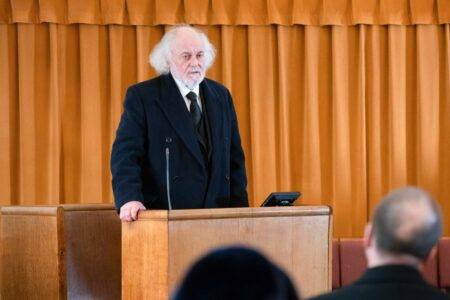The Tuesday letters page reacts to rumours of Hi-Fi Rush and Sea Of Thieves going multiformat, as one reader can’t cope with 30fps anymore.
Month: January 2024
Deobra Redden returned to Las Vegas court heavily restrained after lunging at a judge who denied him bail.
‘An accident of fate could bring you together in the most unlikely place.’
Her worries spiral.
It’s far from a quiet arrival for either of them…
The Red Devils are into the fourth round of the FA Cup.
‘We almost didn’t make it to this one, well a couple of them, if I’m being honest.’
‘Imagine this happening today. The switchboards would melt.’
He is awaiting sentencing.
‘I’d be fuming with him.’
The Red Devils are happy to sell.
Prince Andrew may be adamant to hold onto Royal Lodge, but if King Charles has his way he may be forced to move into a smaller property.
The actor, who has been in Hollywood films, has been involved in emotional scenes.
Many have struggled to shake the actor’s past role.
Yet another source has suggested that existing Xbox exclusives are going multiformat and that MMO Sea Of Thieves will be amongst them.
Blair had EVEN more signatures on a petition to strip him of a knighthood.
Investigators are considering arson as a possible cause.
‘Sad to see Disney completely ignore and not promote their show and then cancel it.’
EA Sports FC 24 was the best-selling video game in the UK over Christmas, as the Nintendo Switch got a major sales boost.
Her man was left with broken bones in his face from the incident.
Werner is now set to finalise his loan move to Spurs.
This computer simulation shows a galactic wind which blows gas out of the galaxy for 200 million years (Picture: SWNS)
Mysterious radio waves the size of several galaxies could be galactic winds from stars that exploded billions of years ago, according to new research.
The winds, which can travel at up to 2,000km per second, were only discovered in 2019 and have so far remained a mystery.
But a team of American astrophysicists now believe the waves are shells formed by galactic winds – possibly from massive exploding stars known as supernovae.
Computer simulations demonstrating galactic winds blowing over 750 million years offer an explanation for the radio circles which have left scientists perplexed up to this point.
Back in 2019, the newly-completed Australian Square Kilometer Array Pathfinder (ASKAP) telescope picked up something no one had ever seen before: radio wave circles so large they contained entire galaxies at their centres.
When they observed these radio rings, a team of researchers from the University of California San Diego studying ‘starburst’ galaxies believed they could provide the answers as to their origin.
Scientists had no idea what the bizarre radio signals were when they discovered them in 2019 (Picture: SWNS)
In their study, published in the journal Nature, the researchers delved into massive starburst galaxies that can drive these ultra-fast outflowing winds.
Starburst galaxies have an exceptionally high rate of star formation.
When stars die and explode, they expel gas from the star and its surroundings back into interstellar space.
If enough stars explode near each other at around the same time, the force of these explosions can push the gas out of the galaxy itself into outflowing winds – which can travel at up to 2,000 kilometres per second.
“These galaxies are really interesting,” explained astrophysicist Dr Alison Coil, a lead author of the study.
“They occur when two big galaxies collide. The merger pushes all the gas into a very small region, which causes an intense burst of star formation.
“Massive stars burn out quickly and when they die, they expel their gas as outflowing winds.”
Technological developments allowed ASKAP to scan large portions of the sky at very faint limits which made odd radio circles (ORCs) detectable for the first time in 2019.
These ORCs were enormous: hundreds of kiloparsecs across, where a kiloparsec is equal to 3,260 light-years.
For comparison, our galaxy, the Milky Way, is around a mere 30 kiloparsecs across.
Since the ORCs were detected, a multitude of theories has abounded to explain their origin, from planetary nebulae – an emission nebula consisting of an expanding, glowing shell of ionized gas ejected from red giant stars late in their lives – to black hole mergers.
But radio data alone could not discriminate between these various theories.
Dr Coil and her colleagues thought it possible the radio rings were a development from the later stages of the starburst galaxies they’d been studying, and began to look into ORC 4 – the first ORC discovered, which is observable from the Northern Hemisphere.
Until 2019, ORCs had previously only been observed through their radio emissions, without any optical data.
Dr Coil’s team, however, used an integral field spectrograph at the W.M. Keck Observatory in Maunakea, Hawaii, to look at ORC 4 which revealed a tremendous amount of highly luminous, heated, compressed gas – far more than is seen in the average galaxy.
Using optical and infrared imaging data, the researchers determined that the stars inside ORC 4 galaxy were around six billion years old.
“There was a burst of star formation in this galaxy, but it ended roughly a billion years ago,” Dr Coil said.
Dr Cassandra Lochhaas, a postdoctoral fellow at the Harvard & Smithsonian Center for Astrophysics and a co-author on the study, ran a series of computer simulations to replicate the size and properties of the large-scale radio ring, including the large amount of shocked, cool gas in the central galaxy.
Dr Lochhas’ simulations demonstrated outflowing galactic winds blowing for 200 million years before they shut off.
When the galactic wind stopped, a forward-moving shock continued to propel high-temperature gas out of the galaxy and created a radio ring, whilst a reverse shock sent cooler gas falling back onto the galaxy.
The simulation played out over 750 million years — within the ballpark of the estimated one-billion-year stellar age of ORC 4.
“To make this work you need a high-mass outflow rate, meaning it’s ejecting a lot of material very quickly,” Dr Coil said.
“And the surrounding gas just outside the galaxy has to be low density, otherwise the shock stalls. These are the two key factors.
“It turns out the galaxies we’ve been studying have these high-mass outflow rates. They’re rare, but they do exist.
“I really do think this points to ORCs originating from some kind of outflowing galactic winds.”
Dr Coil added that these outflowing winds could not only help astronomers understand ORCs, but could also help astronomers understand the outflowing winds themselves.
“ORCs provide a way for us to ‘see’ the winds through radio data and spectroscopy,” she said.
“This can help us determine how common these extreme outflowing galactic winds are and what the wind life cycle is.
“They can also help us learn more about galactic evolution: do all massive galaxies go through an ORC phase?
“Do spiral galaxies turn elliptical when they are no longer forming stars? I think there is a lot we can learn about ORCs and learn from ORCs.”
Palmer can help Chelsea take charge of Carabao Cup semi-final.
Hit that G-spot with minimal effort.
Chelsea are desperate need of a striker.

























